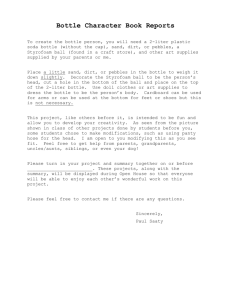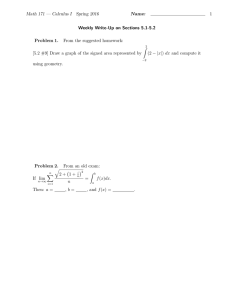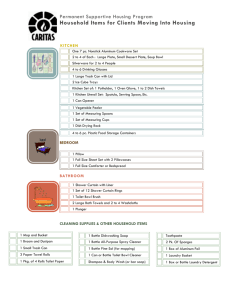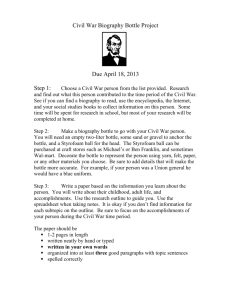MTR
advertisement
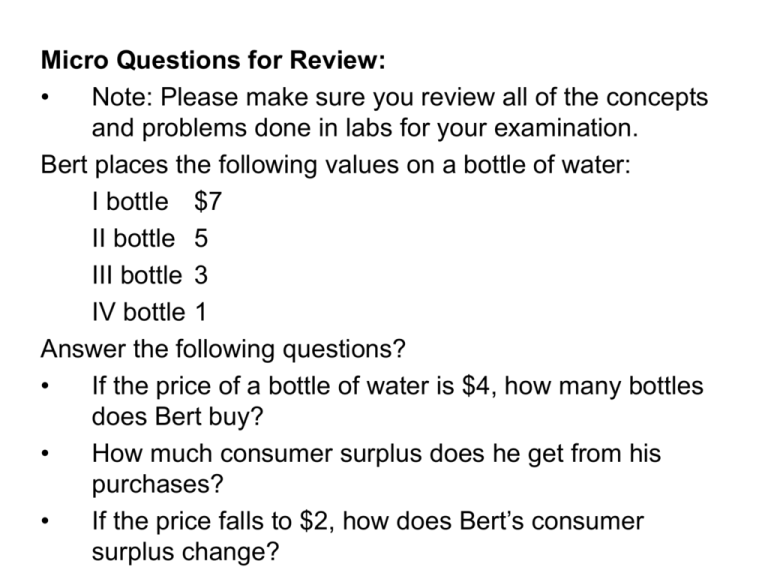
Micro Questions for Review: • Note: Please make sure you review all of the concepts and problems done in labs for your examination. Bert places the following values on a bottle of water: I bottle $7 II bottle 5 III bottle 3 IV bottle 1 Answer the following questions? • If the price of a bottle of water is $4, how many bottles does Bert buy? • How much consumer surplus does he get from his purchases? • If the price falls to $2, how does Bert’s consumer surplus change? • Greater consumption of alcohol leads to more MV accidents, and thus, imposes costs on people who do not drink and drive. – Illustrate the market for alcohol, and show the market equilibrium level of output and the efficient level of output. – On your graph, shade the area corresponding to the deadweight loss of the market equilibrium. • X loves watching Teletubbies on his local public TV station, but he never sends any money to support the station during its fundraising activities. – What would an economist call X? – How can government solve the problem caused by X? – Can you suggest ways in which a private market can solve this problem? • Your aunt plans to open a store. She estimates that it would cost $500,000 per year to rent the location and buy the stock. In addition, she would have to quit her $50,000 per year job. – What is her opportunity cost of running a store? $50,000 (income lost) – If your aunt could sell $510,000 worth of merchandise in a year, what is her economic profit? $-40,000 (550,000-510,000) – As an accountant, would you advise her to open the store? Yes, because she makes an accounting profit of $10,000 – If she makes a non-refundable deposit of $500 to the landlord and later finds that the location is no good. Should she forfeit her deposit or open the store in the same location? Explain your answer? No, because it is a sunk cost (cost is committed and cannot be recovered) and doesn’t represent an opportunity cost. Therefore, it shouldn’t influence her decision to change the location.






